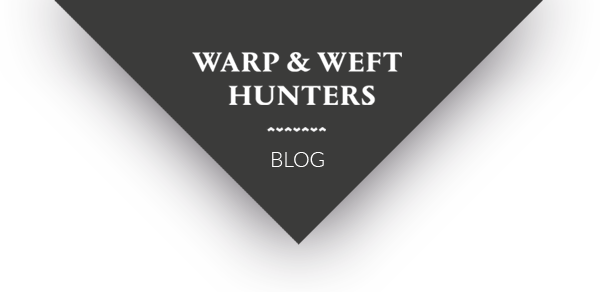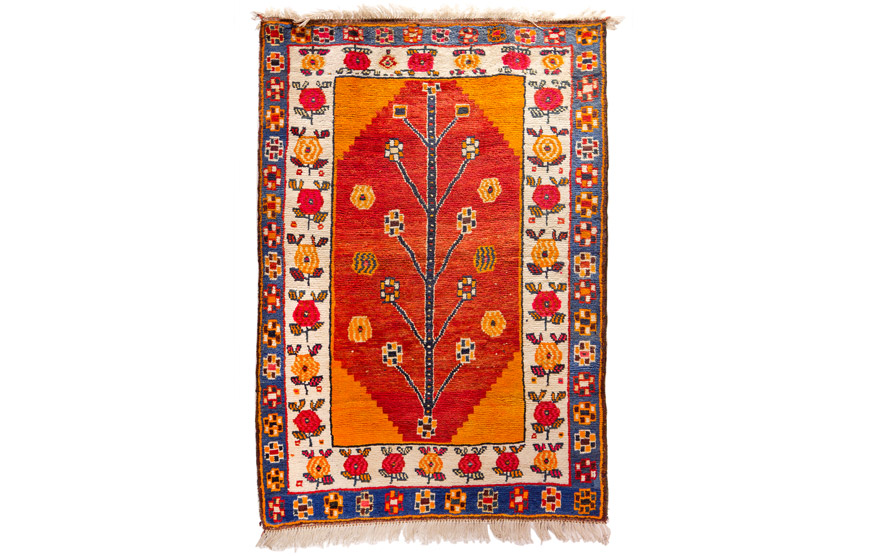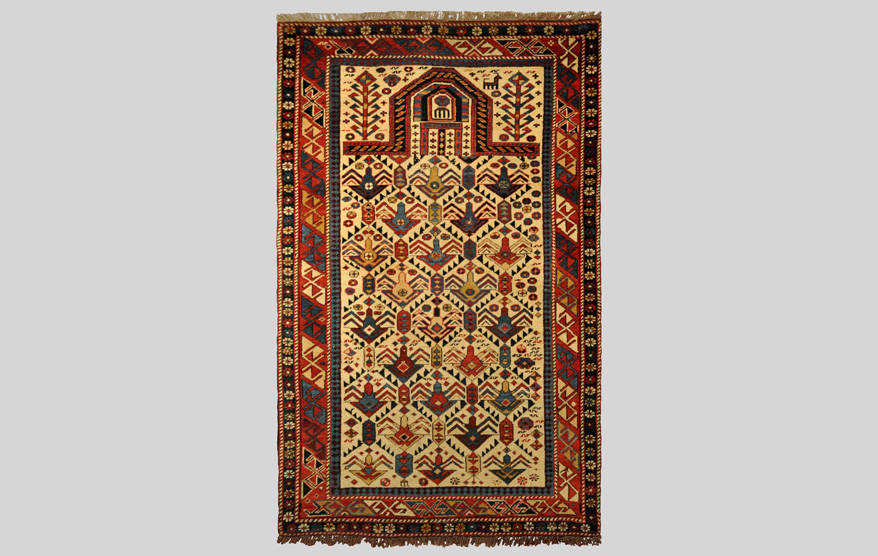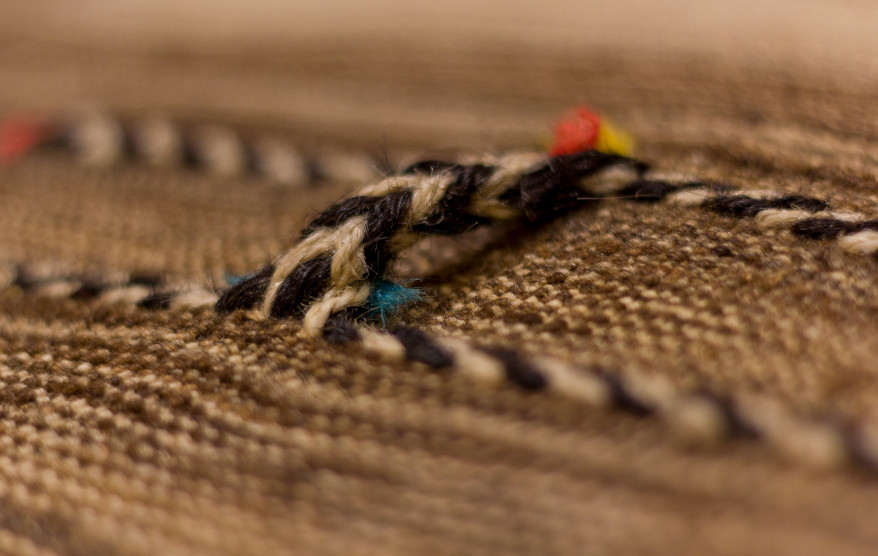DAGHESTAN RUG
Ref. 06131, 93 x 157 cm.
This ancient prayer rug (ca. 1.870) from the Daghestan region, in the northeastern Caucasus, is hand-knotted in wool, with the Turkish knot technique, on woolen warps and wefts and crafted in a horizontal loom. Prayer rugs are intended for Muslim prayer and therefore always have a distribution oriented towards a chapel or Mihrab.
Examples of prayer rugs with their Mihrab structure:
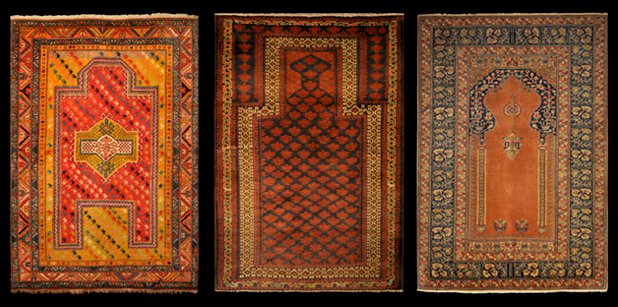
Left to right: Caucasian Shirvan, Afghanistan Baluchistan and Turkish Kayseri.
The mihrab or chapel is surrounded by two large flowering stems, the tree of life’s symbol, representing longevity, future life and hope. It is remarkable the depiction of an animal, either a goat or a sheep, on top of the mihrab, as a sort of homage to these animals’ contribution in the making of the carpets, the wool.
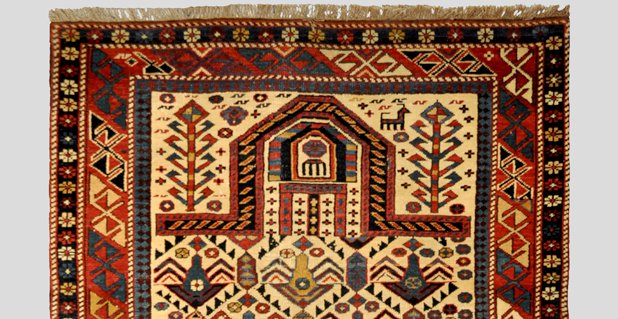
We can also spot some small horizontal Z-shaped motifs, which appear at the top of the mihrab and scattered over the background. It's a schematic representation of clouds.
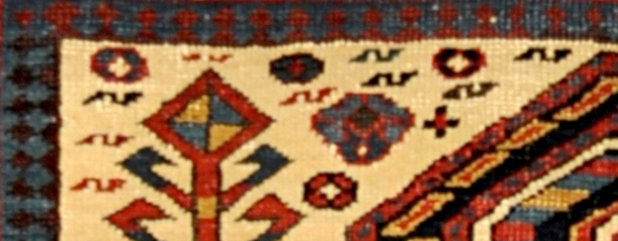
Inside the mihrab there is also another small chapel with a comb motif, symbol of purity related to the protection of marriage and birth, since these pieces were woven as part of a dowry.
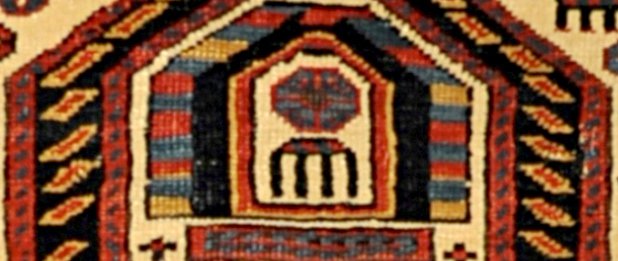
The central area is filled with geometric floral patterns, a very common characteristic in this region’s crafts, which evoke oriental gardens related to paradise. In the empty spaces, we can spot a wide range of small geometrical and floral motifs among other ancestral and traditional symbols.
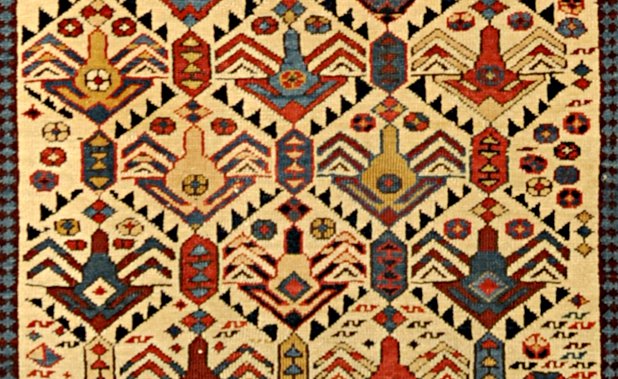
The main border (the widest), known as "reciprocal", is highly appreciated in the Caucasus carpets. It stands out for its simplicity and elegance.
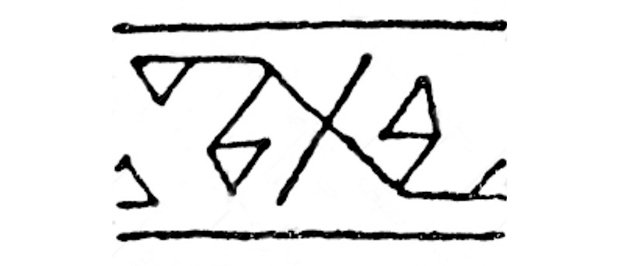
It is noteworthy the optical effect of the small blue and black head, known as "Lahl e Abbasi", between the main and the central field. It consists of the set of contrasts of two colors: wha t is the main motif?, blue or black?
The carpet is framed with an exterior head of small flowers of different colors, some of which seem to have escaped the central field.

In the upper left corner, a small Z-cloud can be pinpointed, and it makes it all look as if the weaver could not complete the chain of motifs and had to fill in the space with this fortuitous symbol. In fact, none of the four corners of the border are consistently linked, which leads us to think that, even when following a pattern to weave the motifs, the execution of them is left to the free inspiration in the hands of the artist.
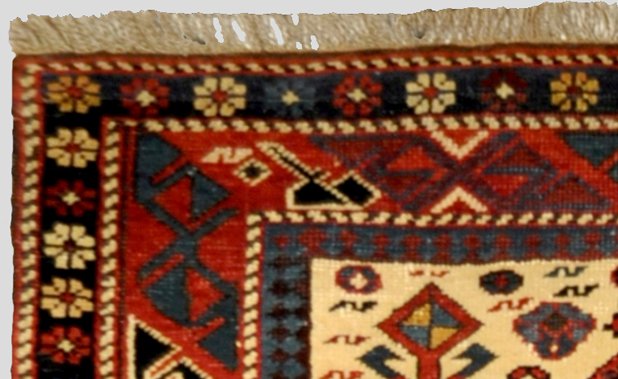
1. Could you find the unique 3D motif on the carpet?

2. Did you find the symbol of the "scorpion" with three legs?

3. How many styles of floral motifs can you find on this carpet?
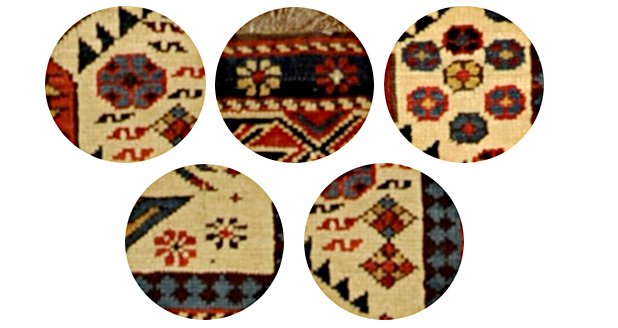
The Turkestan Team

